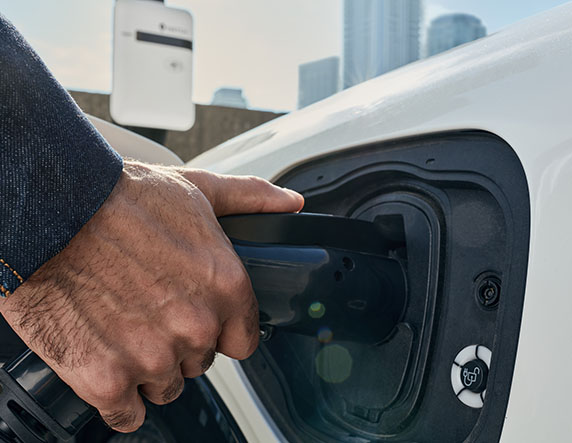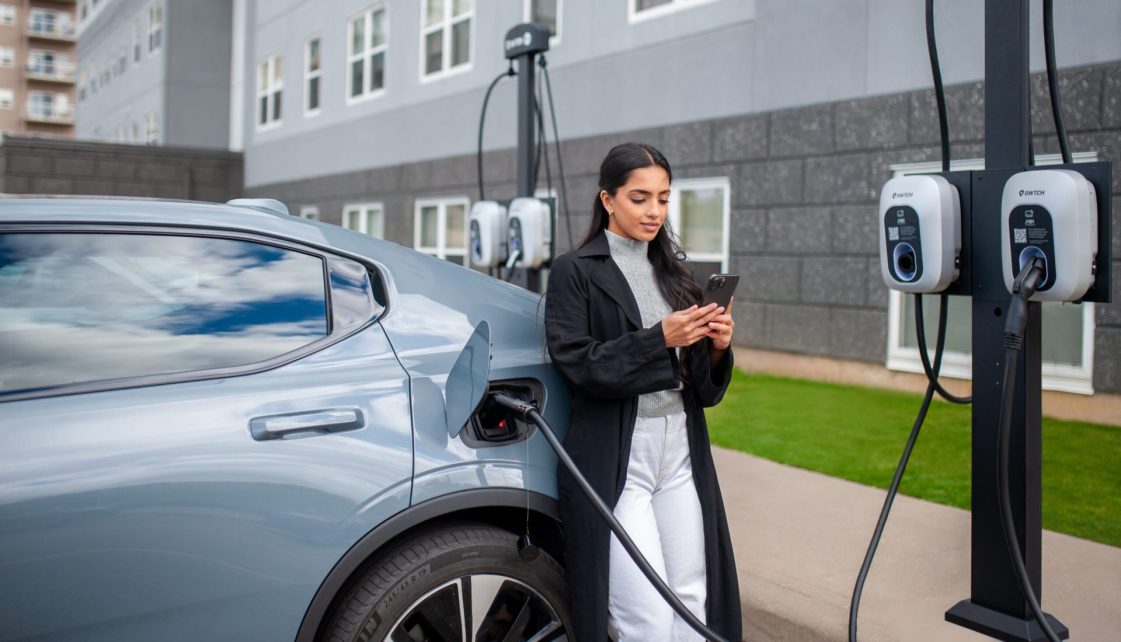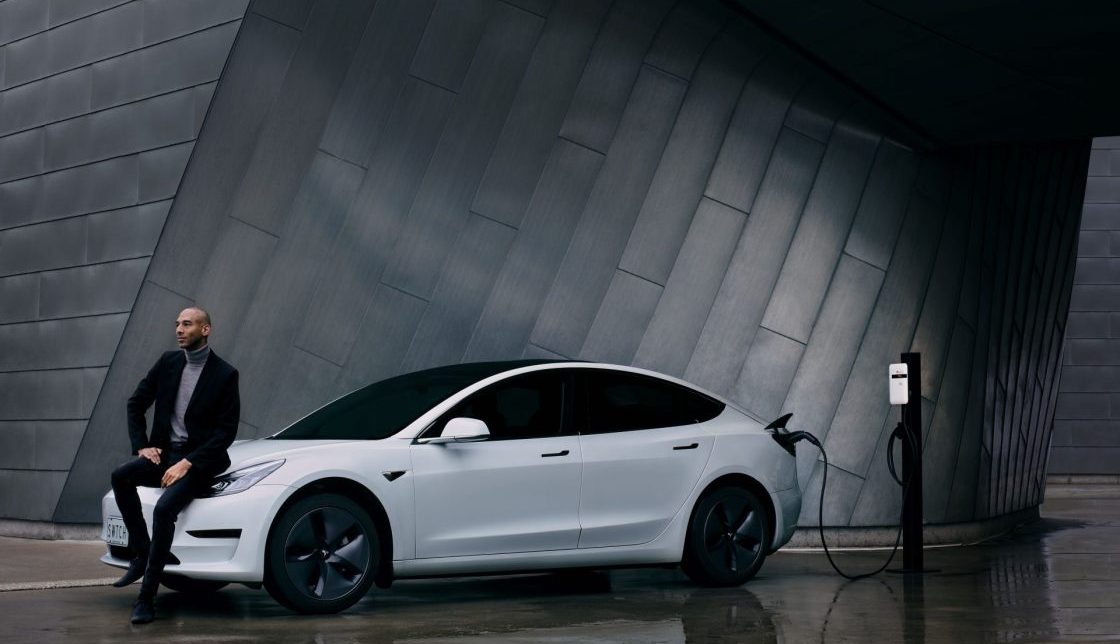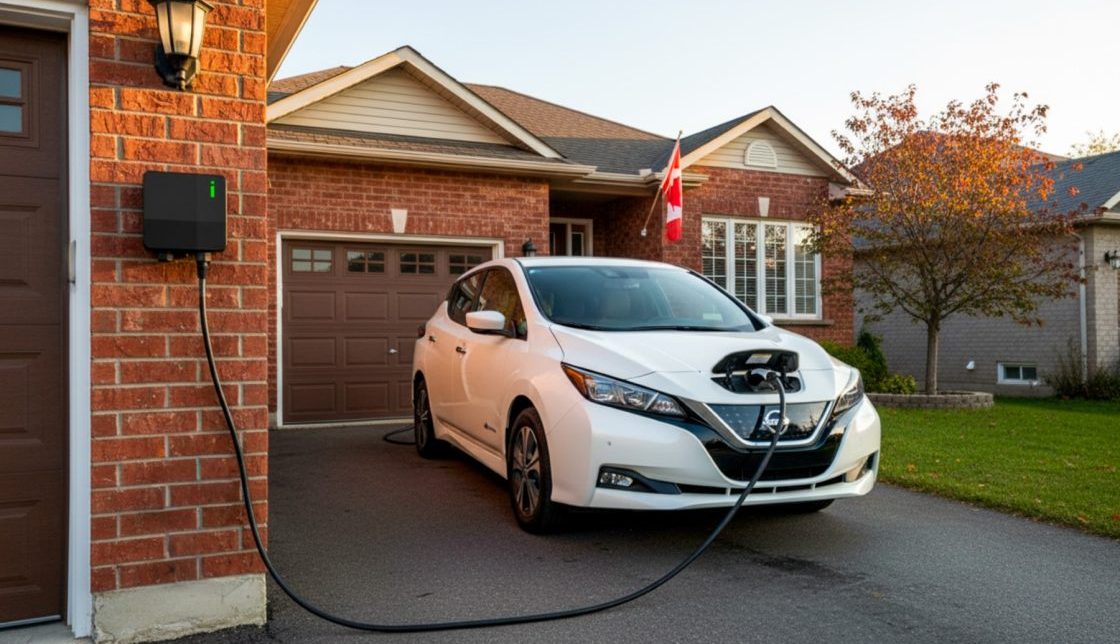Supercharge your parking business: how EV charging can transform your facility and boost profits
Electric vehicles are taking over the auto market, and with that comes increased demand for charging in just about every public environment. One of the best fits and most obvious choices for places to put charging stations is parking facilities.
Because of their convenient locations and ability to accommodate many vehicles at once, parking lots and garages can quickly become preferred destinations for EV drivers looking for a safe place to plug their cars in. Whether their car is there for a short stay or for the duration of a long trip, drivers love the security and convenience of having their cars charged up when it’s time to head home.
Want to add EV charging to your parking facility to meet this new demand—and make some nice new revenue in the process? Here’s what you need to know to do it well.
Why EV Charging is now a must-have for parking businesses
There’s a need for more EV chargers. More EVs are on the road than ever, and the expansion of public charging infrastructure is beginning to lag the growth in the number of electric vehicles on the road.
By adding chargers, you suddenly make your parking facility a top destination for a growing number of drivers today and gain the opportunity to build long-term preference with them for the years ahead. Sure, other nearby lots might add chargers 5, 10 years from now, but you’ve been EV drivers’ go-to spot the whole while. Why would they change their preferred parking destination?
Beyond attracting EV drivers to your facilities, there’s also an opportunity to earn new revenue from providing the charging services themselves. This revenue can be so substantial as to pay off the costs of chargers within a few years of their installation, meaning your chargers can turn into a new source of profits quite quickly.
Finally, it’s worth noting that there are currently many different incentive programs at the federal, state/provincial, and local levels. It’s likely there won’t be this much funding on the table for many more years, so the sooner you get EV chargers installed, the greater the benefits and the lower the cost.
Types of EV chargers and installation strategies for parking facilities
Something interesting about parking facilities is that, depending on their clientele and location, they can actually benefit from all three kinds of EV chargers that are out there.
Here’s the breakdown.
Level 1 charging: Slow, but good for multi-day or long-term parking facilities
Level 1 chargers offer the slowest version of charging, equivalent to plugging a vehicle into a standard wall outlet at home. At this level, a vehicle will typically take 2-3 days to complete a full charge.
While this is slower than most people like for charging day-to-day, it’s a totally appropriate speed for occasions when a car will be parked at a lot for days or even weeks—like with some airport parking.
And because Level 1 charging is the least demanding and expensive, it’s usually possible to accommodate many more chargers in a location, meaning you can very quickly deploy enough chargers to meet all the charging demand your long-term parking might have.
Level 2 charging: The best charging option for most parking businesses
Where Level 1 is too slow for most drivers and Level 3 is intended for stays of under an hour, Level 2 is the ideal fit for nearly all parking facilities.
Level 2 charging sessions will deliver a considerable boost to a car’s state of charge in a matter of hours. This makes it ideal for parking near workplaces, train stations, retail environments, and anywhere else a person is likely to return to within a few hours.
Level 2 chargers and the associated installation costs are higher than with Level 1 but far lower than Level 3, so it’s really right in the sweet spot when considering performance and price.
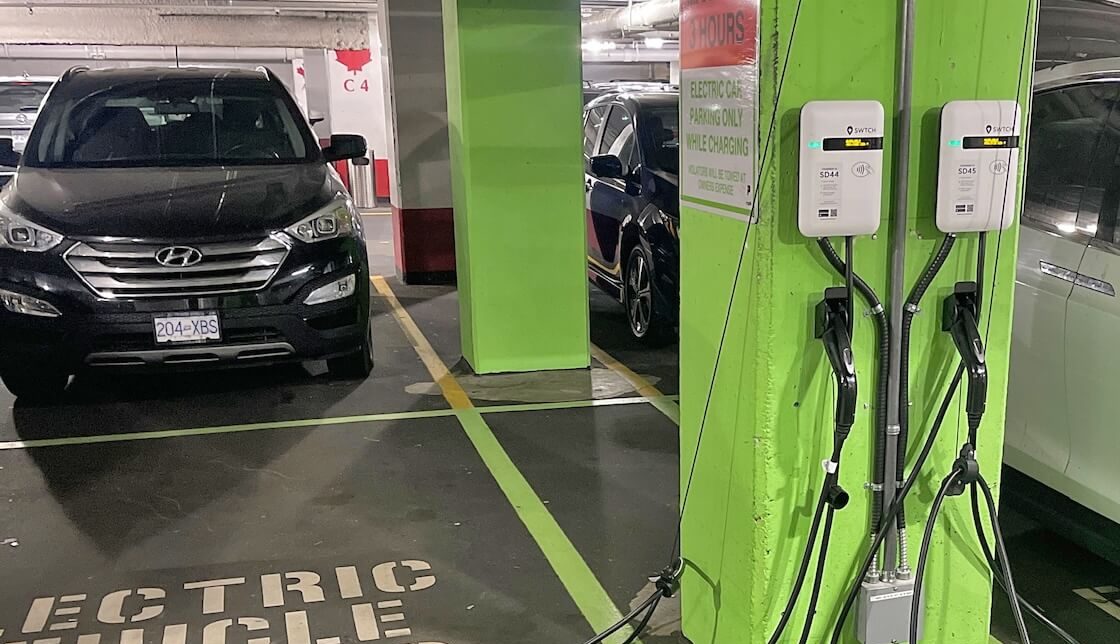
Level 3 (DCFC) charging: Expensive, for short-term parking/charging only
Generally speaking, parking facilities will not want to install Level 3 parking. The chargers are quite large and very expensive, and they charge cars so quickly that a vehicle is likely to be fully charged in about an hour at the longest. Given this short time (and the need to move a charged vehicle off the charger so that another car can take its place once a session is complete), it’s just not quite the right fit for how most people engage with parking facilities.
That said, for free parking, for short-term parking, or for situations in which you might want to make a small corner of your lot accessible just as a host for a public EV charger, Level 3 can certainly be appropriate.
Level 3 chargers cost in the tens of thousands of dollars and represent heavy demand on your electrical systems (which will certainly need to be upgraded), so it’s quite expensive to install several in one location.
Finding the right number of chargers to install at your parking business
Parking facilities can have dozens, hundreds, or even thousands of spaces. Chances are, you’re not going to go and electrify all of them right away. But what’s the right number to start with?
The truth is, there’s no one-size-fits-all answer. The correct number depends on a few factors, including the level of chargers you’re looking to install.
As a starting point, it’s worth considering the following:
- How many (if any) inquiries or requests for charging you’ve received at your facility
- How much electrical capacity you currently have on site
- What budget you currently have available for adding chargers
Have a lot of people asking about charging? You might want to consider rolling out a larger number. Don’t have much spare electrical capacity? You may decide to start with fewer and build up over time.
Depending on the prominence or importance of your parking facility and the host or customers it serves, you may want to consider conducting or paying for market research to better understand the true demand for charging. Parking facilities meant to serve airports, hospitals, or universities, for example, may want to consider this step.
And if you’re unclear on the best approach for your business in particular, do feel free to reach out. We’ll be happy to walk you through a process to figure out the right number of chargers to start with.
Key technologies for installing more, better, and more affordable parking facility EV chargers
Not all EV chargers are equal. Selecting the ones that have the right technology can help you drive down costs, better manage energy consumption, and ensure more flexibility and choice as you evolve your parking lot charging offering in the future.
Here are three key features to look out for.
Intelligent energy management for better integration of your chargers
EV chargers do require a fair bit of electricity to operate, and a standard approach to installing them can therefore require some extensive electrical upgrades. Few buildings or properties are already equipped to handle several chargers getting installed (and used) at once.
By adopting solutions capable of intelligent energy or load management, you can keep costs and energy usage in line while still delivering a great charging experience to your customers.
Highlight features of a good load management setup include:
- Being able to install and operate up to four EV chargers on a single circuit
- Being able to moderate the amount of electricity sent to active chargers if other services at your property are drawing a lot of energy
These features essentially allow you to complete installations for less money (or at least install more chargers for the amount you’re spending on upgrades), and to ensure you never incur demand charges from your utility if ever your overall energy consumption is exceptionally high.
For a closer look at load/energy management, and to see how SWTCH handles it, take a look at this article.
OCPP compliance for better functionality & more choice
OCPP (the open charge point protocol) is the world standard for open charging. It defines specific features that chargers should support to make charging a seamless experience everywhere.
But more than this, it creates a basis for hardware and software suppliers to work together. Any OCPP-certified hardware should work seamlessly with any OCPP-certified software.
This means that by making OCPP compliance one of your criteria when adopting EV charging solutions, you’ll make it easier to evolve your installation as needed over the years.
Don’t like your charging hardware? You can swap it out anytime without having to invest in new software. Don’t like your charging software? Replace it with something new without having to rip out your chargers.
We’re firm believers in the value of this standard at SWTCH, which is why we completed official certification and contribute to the development of OCPP for charging networks to use around the world.
To learn more about the value of OCPP, take a look at this guide.
An ongoing data or internet connection for remote management and monitoring
EV chargers work best when they are connected to the internet. It allows for 24/7 monitoring and instant notifications if ever a charger malfunctions, and it allows you to more easily keep an eye on charger activity, energy consumption, revenue earned, and more.
Even in areas with limited access to mobile data, such as underground parking, there are plenty of options available to keep your chargers connected.
And with solutions like ours from SWTCH, occasional connectivity disruptions will not cause any issues. Onboard smarts ensure that your chargers keep working, keep track of who owes what for their charging sessions, and will ensure that operation continues to be seamless until the connection is restored.

Funding and incentives for EV chargers for your parking facility
Though hardware and installation can be costly, there are fortunately some incredible funding opportunities available to make it easier and more affordable for you to install EV chargers.
The specific programs you are eligible for will depend on where you are located (in terms of country, state/province, and even county or city), as well as who your utility provider is.
Wherever you are, though, you’ll be eligible for at least thousands of dollars of funding for most projects, sometimes anywhere from as much as half to all of the total cost of your project.
It’s a lot of money, so be sure to do a little research into the options available to you, or else reach out to our team for assistance. We’ll be happy to help ensure you get the maximum funding possible for your chargers.
Quick notes on EV charging & compliance with disability and accessibility laws
EV charging is covered by the Americans with Disabilities Act and other laws, regulations, and guidelines in place across North America. You’ll want to ensure that your installation is ADA-compliant (and/or compliant with your regional/national equivalent) so that all your visitors are able to access and use your EV chargers easily and comfortably.
Full guidelines for relevant programs will be available through their websites, but here are a few points that are worth keeping in mind, especially when considering where in your parking facility to install the chargers.
- Ensure there’s adequate space for mobility to and around EV chargers for people who use wheelchairs or other mobility aids
- Ensure charging connector handles are at a height that is accessible for people who use wheelchairs or mobility aids
- If possible, install chargers with connectors that connect smoothly to vehicle ports; some chargers are remarkably difficult to connect
- Ensure all EV charging spaces, and particularly any designated as accessible EV charging spaces, are clearly indicated by signs
- Ideally, place chargers near the entrance and/or elevators to ensure easy navigation for visitors with accessibility needs
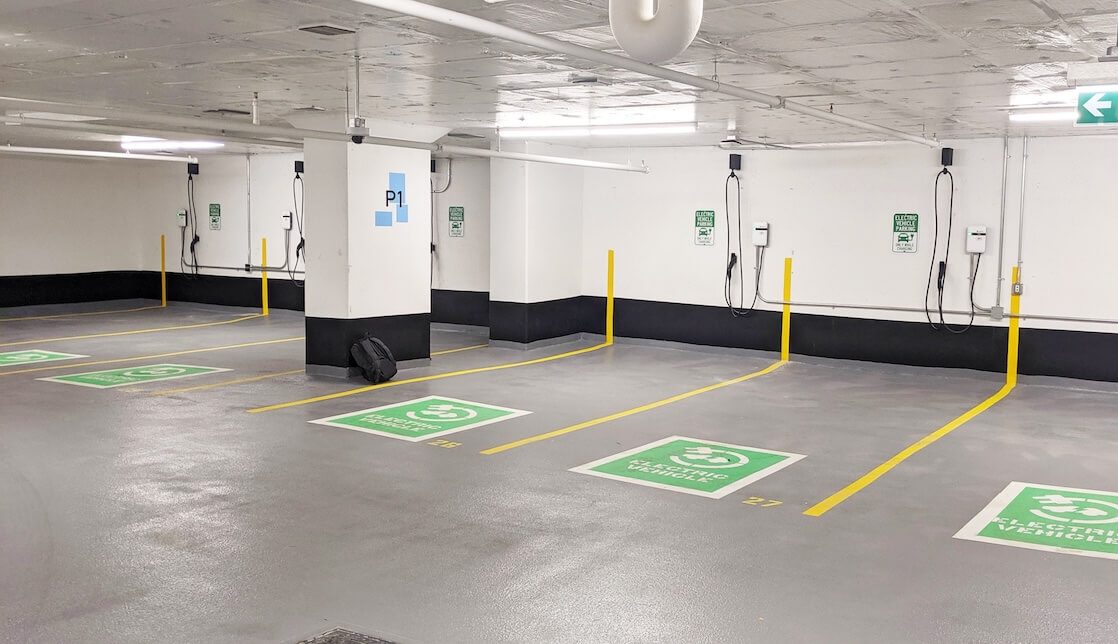
Implementing EV Charging for parking: The details to get right
In order to make the process of deploying EV chargers as smooth as possible, it’s important to take the time to plot out your strategy, with all the necessary paperwork, partnerships, and in-house planning, in advance.
Though by no means exhaustive, here are some of the biggest steps parking companies ought to pay attention to when planning an EV charging project.
1. Select a good EV charging solutions provider & partner
One of the earliest steps to complete when planning out your project is to secure your solutions provider, the one who will work with you to select and source your hardware and onboard the software that you’ll use to manage your network.
Doing this first is important because a good solutions provider will already be well-connected to potential installation partners and should be able to help you identify local experts who can do the job well.
They will also have a great deal of experience securing incentives, rebates, and other forms of funding that can drive down the cost of your project. Depending on your preference, they should either be able to provide you guidance for how to successfully apply to relevant programs or even complete your application(s) for you.
Be sure to evaluate solutions providers not just on the strength of their hardware and software, but also the depth and breadth of their partnership with you in the months and years ahead. It could save you a great deal of time and money in getting your project done.
See the benefits of partnering with SWTCH
2. Identify and apply for permits, approvals, & financial incentives
EV charging projects typically require some amount of electrical work to accommodate the new chargers, and this work will usually require some sort of permit in order to proceed.
Additionally, there is usually a need to verify with your utility that there is enough spare capacity in the local system to power your EV chargers.
Finally, if you intend to apply for funding from government and utility programs (and you should), you’ll need to get the paperwork completed in advance.
Reach out well in advance to local officials and your utility, and research the requirements and application process for any incentive programs you might wish to apply to.
And remember, you don’t have to go it alone. If you would like assistance navigating this entire process, reach out to our team here at SWTCH. We’ve helped many customers through exactly these steps all across North America, and we’ll easily be able to make the process of getting chargers installed simple and smooth.
Get in touch with our team today
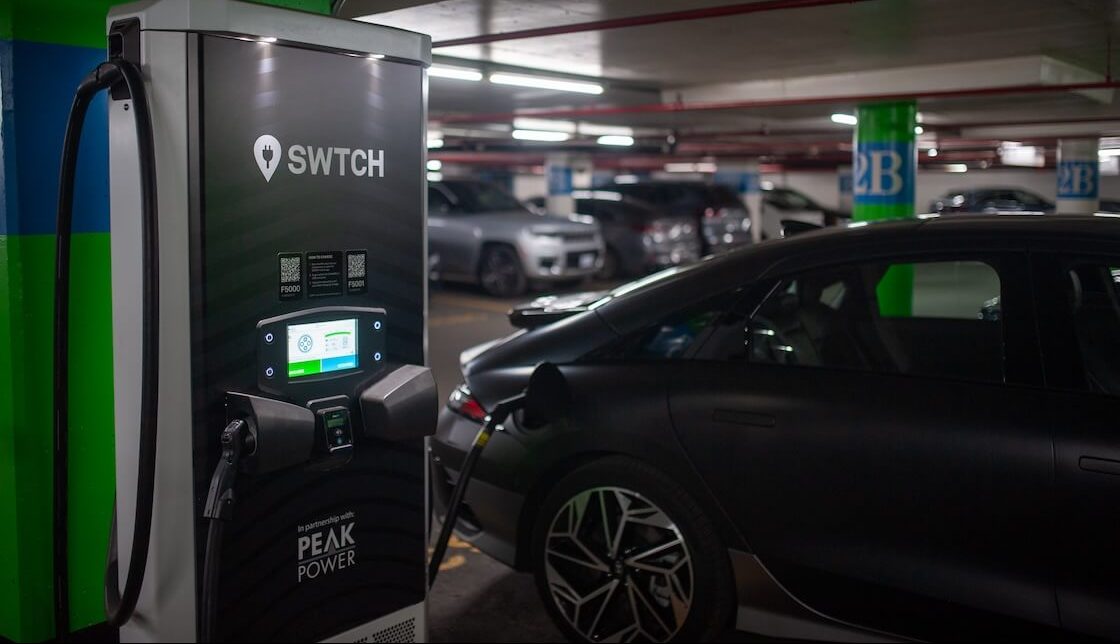
3. Determine your desired time to ROI + the pricing model you’ll use to get there
A well-planned and executed EV charging setup at your parking business will pay for itself in a few years. The precise length of time it takes will depend on a few factors, like the cost of the initial project, any upgrades or expansions you plan to make over time, and the price that your customers will pay to use your chargers.
Spend a little time planning these details out in advance to get a sense of how long you want to go before your chargers start turning a profit.
This is also the time to decide the specific way users will be charged. For instance, will you charge based on the duration of a charging session or based on the amount of energy delivered during a charging session?
You should always be able to evolve your plans and change the amount you charge or the way you charge, so don’t feel stressed about being locked in. This is just an important starting point to help you evaluate the progress of your new charging offering after it’s been installed for a few months.
4. Decide whether and how you want to promote your parking facility’s EV chargers to your customers
If you place your chargers near the front of your parking facility, odds are good that your EV-driving customers will see them right away and make use of them if they want or need them. Still, it doesn’t hurt to go a little further to ensure your customers are aware of their availability.
Painting EV charging spots a highly visible green colour is one common tactic that highlights their presence, and is a good starting point.
You might also consider adding signage in your parking facility to direct drivers to the spaces with chargers, or even posters inside elevators or by payment terminals to promote their availability.
And if you select a smart charging solution, your chargers can appear within various mobile applications that EV drivers use to find available chargers and initialize charging sessions. This is an easy way to promote your chargers to exactly the right audience with little-to-no input required from you.
Special considerations for EV charging for valet parking
If your parking facility offers valet parking services, you may also want to consider how best to accommodate EV drivers who will engage valet services and also want to charge their cars.
Charging as a free extra vs. an additional fee
One solution could be to simply have EV charging made available to valet customers as an added, zero-cost addition. With this model, upon request, your valet would simply park a car in a charging space and plug it in to initialize a free charging session.
It’s a nice extra that can make the valet experience feel extra valuable, but it does mean an additional cost in the form of the electricity.
For an example of this model applied to valet parking for hospitality, read this spotlight on our work with Fairmont Royal York hotel.
Or, you can simply use a smart charging solution to bill your customers for their charging activity on top of the valet parking fees. It’s best to communicate the rate for charging clearly in advance, but because most drivers will likely expect there to be an additional charge, it’s totally appropriate to choose this pricing model as well.

Consumption monitoring & billing
In order to fairly charge valet customers for the electricity they consume, you’ll need to ensure you select an EV charging system that can monitor the electricity consumed by an individual charging session + tally up the associated cost for that session.
Depending on your preference, there are a couple of ways to handle this.
First, you could go with the simple option, where you simply use a smart charging solution with an associated app for users. In this case, your staff would use the charger as though they are a user and manually add the quoted price at the end of the charging session to the final valet parking bill.
Or, as a second option, you could connect your EV charging solution to your parking management system and have the process of tallying and adding EV charging fees to the final bill automated.
For this latter option to work, you’ll to pick an EV charging solution that offers an open API for integrations. If you’re curious about how this works and what it looks like, reach out to our team at SWTCH! Our API allows for connection to all manner of external systems, including parking management, and we’ll be happy to demonstrate what a connected system could look like.
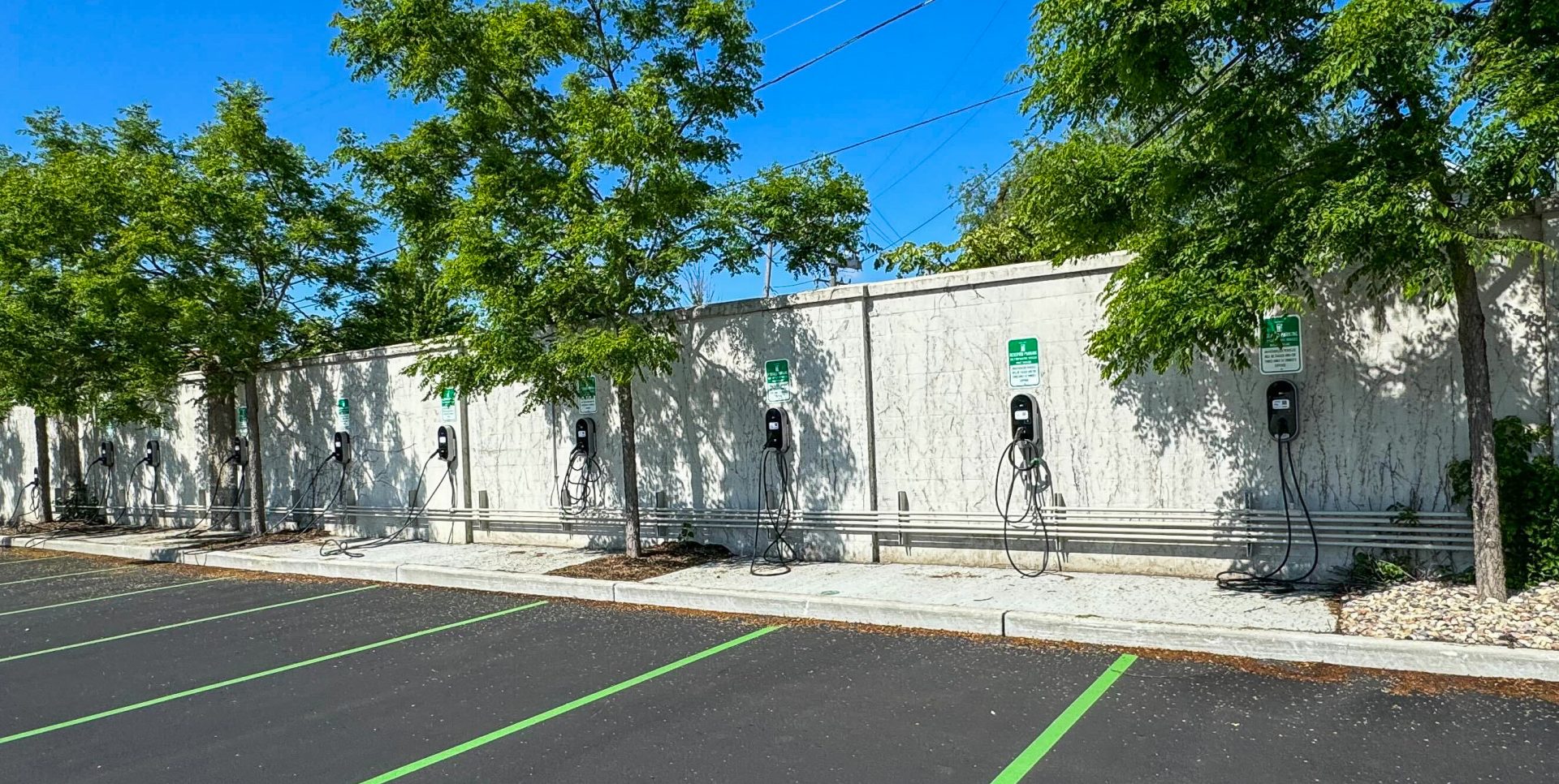
Parking lots, parking facilities, garages—they serve many different kinds of customers and environments with many different needs. But what is true of all of them is that they are enhanced by a thoughtfully designed and implemented parking facility EV charging solution.
Today and for every year ahead, being able to offer a great charging experience to as many of your customers as you can will be a competitive advantage. And with incentive programs today being as good as they are, there will never be a better or more affordable time to get out ahead and install chargers at your facility.
Ready to put your parking facility on the EV charging map?
Reach out to our team today to get started!

